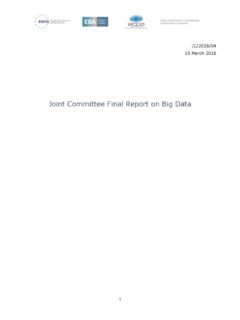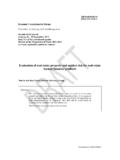Transcription of INTERNATIONAL COMPETITION NETWORK ANTITRUST …
1 INTERNATIONAL COMPETITION NETWORK ANTITRUST enforcement IN REGULATED SECTORS SUBGROUP 1 AN INCREASING ROLE FOR COMPETITION IN THE REGULATION OF BANKS BONN, JUNE 2005 This Report has been drafted by Darryl Biggar (Australian COMPETITION and Consumer Commission, ACCC) and Alberto Heimler (Italian ANTITRUST Authority and co-chair of subgroup 1 of the AERS Working Group). The COMPETITION authorities of Brazil, Hungary, Indonesia, Mexico, South Africa and South Korea provided very useful inputs.
2 Comments and suggestions were received from ICN members and from the following individuals: Ginevra Bruzzone (Assonime), Fr d ric Jenny (Professor of economics at ESSEC and co-chair of subgroup 1 of the AERS Working Group), Paul Wachtel (New York University) and, in particular, Massimo Marchesi. The ICN AERS Working Group, subgroup 1, thanks very much those that contributed. I. INTRODUCTION 1. Banking regulation originates from microeconomic concerns over the ability of bank creditors (depositors) to monitor the risks originating on the lending side and from micro and macroeconomic concerns over the stability of the banking system in the case of a bank crisis.
3 In addition to statutory and administrative regulatory provisions, the banking sector has been subject to widespread informal regulation, , the government s use of its discretion, outside formalized legislation, to influence banking sector outcomes (for example, to bail out insolvent banks, decide on bank mergers or maintain significant State ownership). 2. Banks in one form or another have been subject to the following non exhaustive list of regulatory provisions: 1) restrictions on branching and new entry; 2) restrictions on pricing (interest rate controls and other controls on prices or fees); 3) line-of-business restrictions and regulations on ownership linkages among financial institutions.
4 4) restrictions on the portfolio of assets that banks can hold (such as requirements to hold certain types of securities or requirements and/or not to hold other securities, including requirements not to hold the control of non financial companies); 5) compulsory deposit insurance (or informal deposit insurance, in the form of an expectation that government will bail out depositors in the event of insolvency); 6) capital-adequacy requirements; 7) reserve requirements (requirements to hold a certain quantity of the liabilities of the central bank); 8) requirements to direct credit to favored sectors or enterprises (in the form of either formal rules, or informal government pressure); 9) expectations that, in the event of difficulty, banks will receive assistance in the form of lender of last resort.
5 10) special rules concerning mergers (not always subject to a COMPETITION standard) or failing banks ( , liquidation, winding up, insolvency, composition or analogous proceedings in the banking sector); 11) other rules affecting cooperation within the banking sector ( , with respect to payment systems). 3. In recent years regulation in banking has become less pervasive and has shifted from structural regulation to other more market oriented forms of regulation. As a consequence COMPETITION has come to play a very important role in the allocation of credit and in the improvement of financial services.
6 The capital requirements framework created in the context of the Basel committee paved the way to the development of stronger COMPETITION in banking. It is unquestionable that all over the world banks now face greater COMPETITION both from new entrants in the banking sector and from other financial companies. 4. COMPETITION authorities have not been much involved in the process of liberalization of banking. Moreover, in several countries the enforcement of ANTITRUST rules until very recently has not been applicable to banking because of sectoral exceptions.
7 5. In this light, the purpose of this report is: to assist policy makers and enforcement authorities (in their COMPETITION advocacy function) in their efforts to promote COMPETITION oriented regulatory reform in banking; to assist policy-makers and enforcement authorities (in their COMPETITION advocacy function) in promoting an environment where COMPETITION law is fully applicable to banking and where there is an appropriate institutional setting to that end; and 2 to assist COMPETITION enforcement authorities in the enforcement of COMPETITION law in this sector, with a special emphasis on merger control.
8 6. The structure of the report is as follows. First, it briefly reviews the recent history of banking regulation (section II). Second, it discusses (under the perspective of COMPETITION authorities) the market failures banking are exposed to, their macroeconomic consequences (section III), and the most common regulatory instruments introduced to address them (section IV). Then, the report examines the impact of recent liberalizations on market power in banking (section V). A brief description of banking issues in developing countries follows (section VI).
9 Finally, the report turns to COMPETITION issues, addressing first the application and scope of COMPETITION law (section VII) and then examining issues of enforcement of COMPETITION law, with a particular emphasis on merger control (section VIII). The final section concludes with a number of recommendations. II THE RECENT HISTORY OF REGULATORY REFORM IN BANKING 7. In the early 70s financial systems were characterized by important restrictions on market forces which included controls on the prices or quantities of business conducted by financial institutions, restrictions on market access, and, in some cases, controls on the allocation of finance amongst alternative borrowers.
10 These regulatory restrictions served a number of social and economic policy objectives of governments. Direct controls were used in many countries to allocate finance to preferred industries during the post-war period; restrictions on market access and COMPETITION were partly motivated by a concern for financial stability; protection of small savers with limited financial knowledge was an important objective of controls on banks; and controls on banks were frequently used as instruments of macroeconomic management.

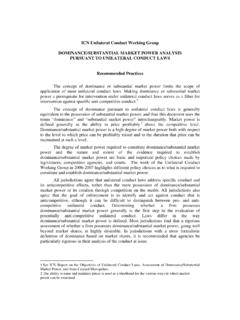


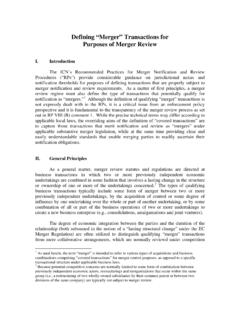


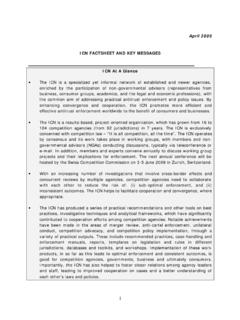
![[MERGER NOTIFICATION PROCEDURE TEMPLATE]](/cache/preview/4/4/e/2/5/9/d/c/thumb-44e259dc3896a9580aeac27f113f9044.jpg)



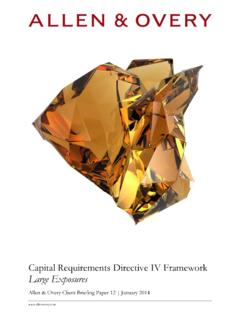
![g^ÔfYf[aYd afkljme]flkak egj][gehd]p& Lae]lgaehd]e]fl [`Yf ]&](/cache/preview/b/5/9/1/d/b/b/8/thumb-b591dbb864bb015fedab5e78503dfa32.jpg)
